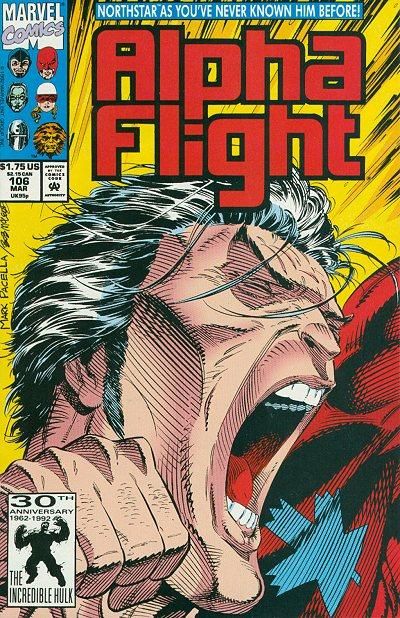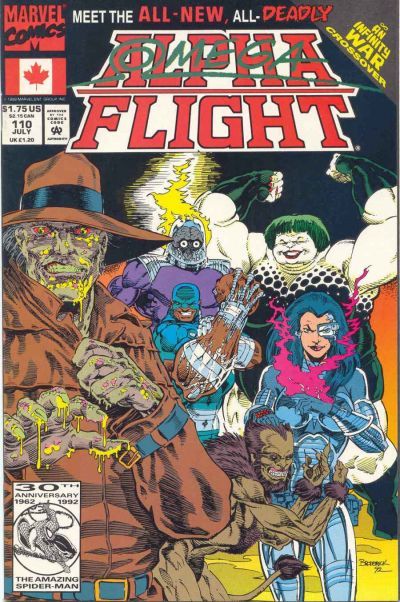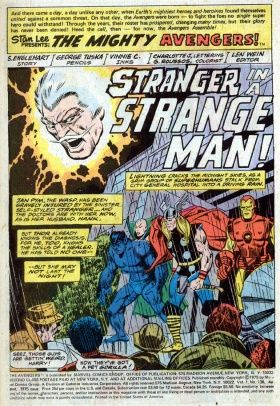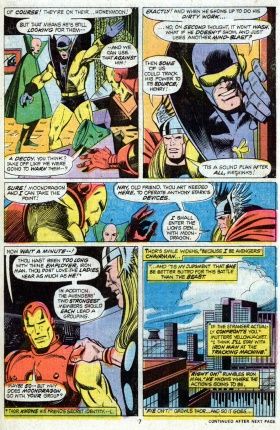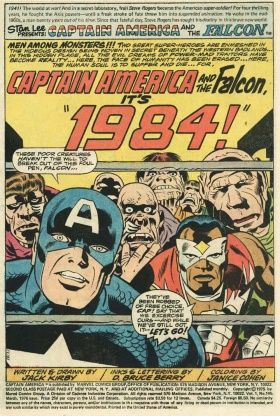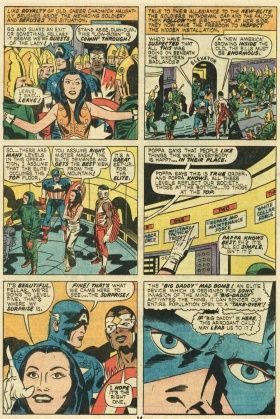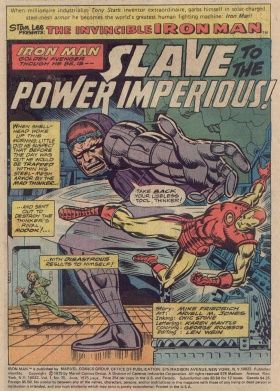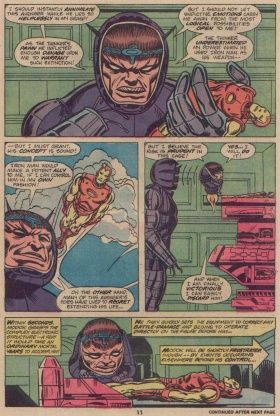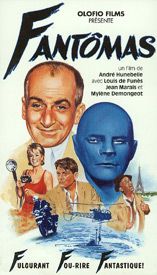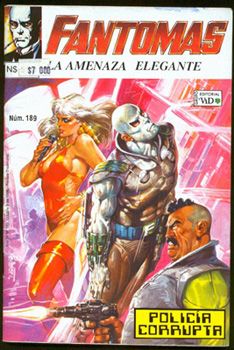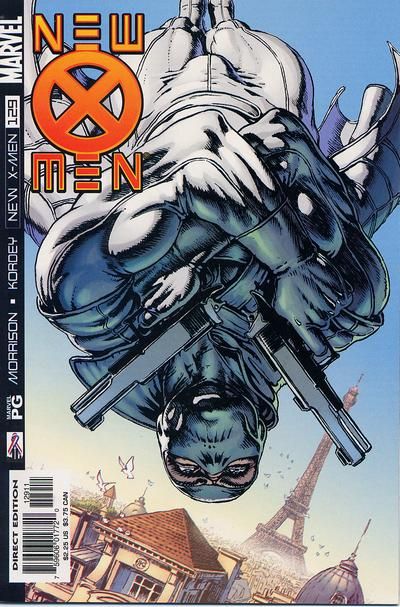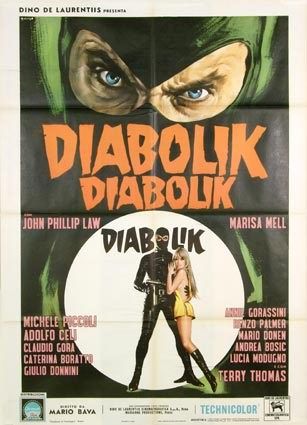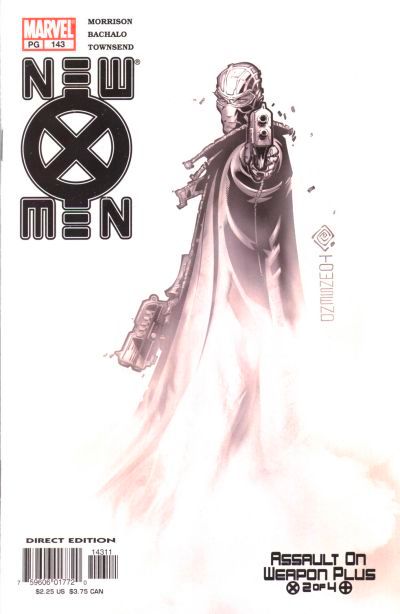This is the sixty-sixth in a series of examinations of comic book urban legends and whether they are true or false. Click here for an archive of the previous sixty-five.
Let's begin!
COMIC URBAN LEGEND: Scott Lobdell was fired from Alpha Flight over controversy regarding Northstar "coming out."
STATUS: False
In 1992, there was quite a stir caused by the release of Alpha Flight #106, in which team member Northstar officially "came out" as a homosexual.
Oddly enough, the writer who wrote the issue, Scott Lobdell, was removed from the book a few months later, during the middle of a storyline, leading to rumors that Marvel was displeased with him over the hoopla surrounding Northstar's coming out.
A few years back, Lobdell dispelled the rumors by explaining the circumstances behind his departure from Alpha Flight. According to Lobdell,
Essentially the outing of Northstar came about because Bobbie Chase (who I miss!) was the editor at the time and as a stickler for schedule, she wanted an inventory story in the draw, just in case. I pitched her five story ideas and one of them was NORTHSTAR coming out of the closet. In my pitch at the time, I essentially said the problem with writing NORTHSTAR is that he has always been pretty much and asshole--rude to people, always angry with the world. Now, this may or may not get me in a world of trouble, but my feeling was "Yeah, I guess I would be angry at the world too if I was spending all my time saving it and yet I feel I couldn't be myself because people wouldn't accept me. And people that I'm saving to boot?! Grrrr!" So I felt the way to start to bring JEAN PAUL away from his angry young man mode was to let him be himself...let him tell the world "this is who I am, deal with it."
My goal was, once this story was written and published, was to start to bring him around...make him happier in his own skin. (We can actually see the start of this is the issue before that issue when he humiliates the gay bashers at BOX's bachelor party...) It would have taken some time, but the outing of Northstar would have had a profound effect on the character and his interactions with others.
So any way, the story was written and then BOBBIE started the MIDNIGHT SON'S UNIVERSE...which meant she had no time to edit ALPHA FLIGHT. As she was leaving, she wanted to burn off the inventory story before she left and so it was sheduled--and no one really gave it s second thought (Not me, not Bobbie, not Tom DeFalco, not Gruenwald...no one) until the issue was published and the media frenzy started.
When the new editor came on, he had very definite and conflicting ideas as to where he wanted to go with the book. (I had shrunk the team to what I felt was a managable 5, he wanted it back at its 13 membership, etc. etc. etc...) As was his right, he booted me. As it turned out, he booted me the week that AF hit the stands...and believe me, that was the last thing anyone at MARVEL would have liked to have happened at the time because it appeared to be "punishment" for outing Northstar.
As it was, that same week I landed UNCANNY X-MEN. I can think of worse punishments, eh?
The incoming writer was Simon Furman, with issue #110.
The book was cancelled with #130.
COMIC URBAN LEGEND: In the 1970s, Marvel had a designated "first page" letterer.
STATUS: True
This came up a year or so ago on Usenet, when poster Glenn Simpson asked,
I've noticed a lot of Marvel comics from the late 1970s had a different, uncredited letterer for page 1 according to the Grand Comics Database). Usually Gaspar Saladino.
Anybody know what was up with that?
Luckily, everyone's favorite "guy who knows a lot about comics" (and proprietor of the super-fun blog, News From Me), Mark Evanier, was there to answer the question. Evanier explained,
Yeah. There was a letterer shortage and Marvel was using a couple of folks who were okay for lettering the balloons but (it was felt) unable to do good story title lettering or the other special captions and credits that usually go on the first page of a story. So the company began the practice of having Saladino letter opening pages whenever possible. The idea was that the rest of the job would go to one of those letterers who wasn't, they felt, as strong at display lettering.
It didn't always work exactly like that. In a few cases, jobs were running so far behind that there wasn't time to get them to Gaspar. In a few cases, Gaspar lettered Page One and then the rest of the story wound up going to a good letterer who could have done Page One. But the reason for what you noticed is that Marvel's editorial folks felt that some of their letterers couldn't handle opening pages.
Interesting, eh?
For your further viewing pleasure, I compiled the first pages of three of the comics in question, Avengers #138, Captain America #196 and Iron Man #75, as well as a random later page from the same issue, so you folks can see if you can tell the difference!
Click on the pages to see a larger version of the page.
Avengers #138 - First page by Gaspar Saladino, rest of the book by Charlotte Jetter
Captain America #196 - First page by Gaspar Saladino, rest of the book by D. Bruce Berry
Iron Man #75 - First page by Gaspar Saladino, rest of the book by Karen Mantlo
COMIC URBAN LEGEND: Grant Morrison took an old French character out of the public domain and made him an X-Men character.
STATUS: True
In France, before World War One, writers Pierre Souvestre and Marcel Allain released a series of novels about a character called Fantomas, who was basically a kingpin of crime. He did all sorts of nasty, evil things, but at the same time, he was so interesting that people liked the character, no matter how evil he was.
The character was so popular that he received movie serials in the 1910s, a sound film version in the 30s, another movie version in the 40s, and a series of films in the 60s and finally, a short-lived TV series in the 70s. Each adaptation varied in how they presented Fantomas, with some making him more of an "anti-hero."
Here is a poster from the 60s film:
It starred Jean Marais as Fantomas. It was not a huge hit in Europe, but became very popular in Latin America.
In fact, while Fantomas had already inpired a Mexican comic book, the comic became even more popular as it incorporated the version of Fantomas from the 60s film. Here's a cover:
Note the garrb. That will be quite familiar to fans of New X-Men, for in 2001, writer Grant Morrison took advantage of the fact that Fantomas had fallen into the public domain by essentially just straighforwardly adding Fantomas to the X-Men as FantomEX.
However, Morrison, while ostensibly using Fantomas, is really basing Fantomex more upon a SECOND character who was, himself, BASED on Fantomas, the Italian comic strip character, Diabolik, who ALSO had a European film in the 1960s. It is the film version of Diabolik (more of a rogueish type, unlike the comic strip character, who tends to be crueler) that most resembles the character of Fantomex.
Here is the poster from the Diabolik film from 1968:
Pretty similar to Fantomex, no?
Likewise, Diabolik's lover and partner's name is Eva. Fantomex has a flying-saucer-like ship called E.V.A., which contains his central nervous system (outside his body, so he can be protected easier) and which he has a symbiotic relationship with (also a telepathic one, as Fantomex can see via E.V.A.'s "eyes").
Fantomex was a supporting character for the rest of Morrison's run, but sadly has not been seen much since then (a short appearance in Mystique and Weapon X being the exceptions).
Pretty cool stuff, no?
For more info on Fantomas, check out this highly informative website, Fantomas Lives!
Well, that's it for this week, thanks for stopping by!
Feel free to drop off any urban legends you'd like to see featured!!


